By Robert Tate, Automotive Historian and Researcher
Images Courtesy of General Motors Media Archives
Published 4.19.2023
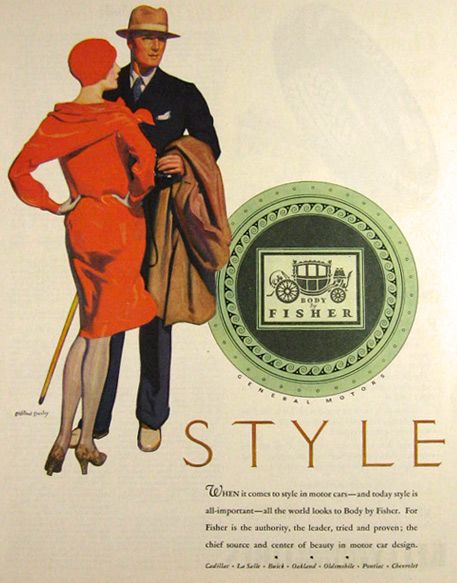 A Fisher Body ad, 1920s (GM Media Archives)
A Fisher Body ad, 1920s (GM Media Archives)
The Fisher Body Company was a major player in the automotive industry. The Fisher Brothers began a working relationship with General Motors in 1910. At the time, Cadillac had placed an order with the Fisher Brothers for 150 closed bodies for building automobiles. The Fisher bodies were manufactured at the Cadillac assembly plant located on Clark Street in Detroit. In 1919, GM purchased 60 percent of Fisher Body, and then bought the other 40 percent in 1926 to become the sole owner of the company.
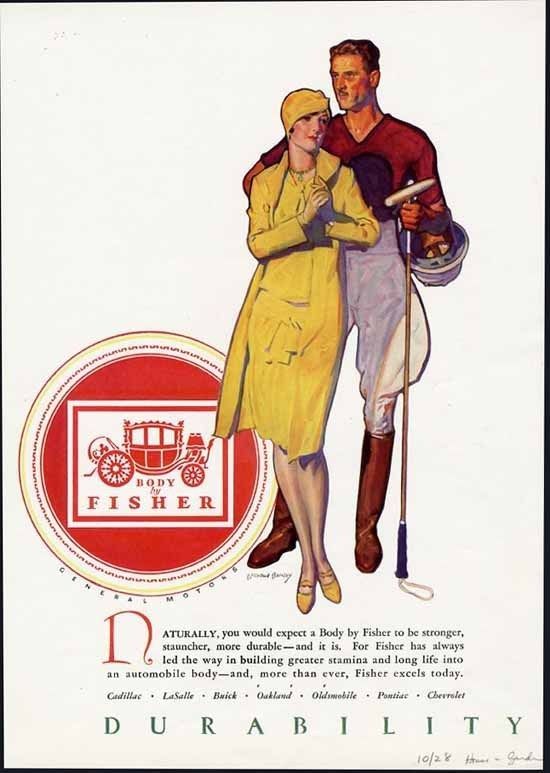 A Fisher Body ad, 1920s (GM Media Archives)
A Fisher Body ad, 1920s (GM Media Archives)
In 1931, Fisher Body purchased Fleetwood Metal Body Company of Pennsylvania and moved their production to a plant on Fort Street in Detroit, which became known as the Fisher Body Fleetwood plant. By this time, the company was the supplier of all closed body frames for GM brands like Cadillac, Buick, Oldsmobile and others.
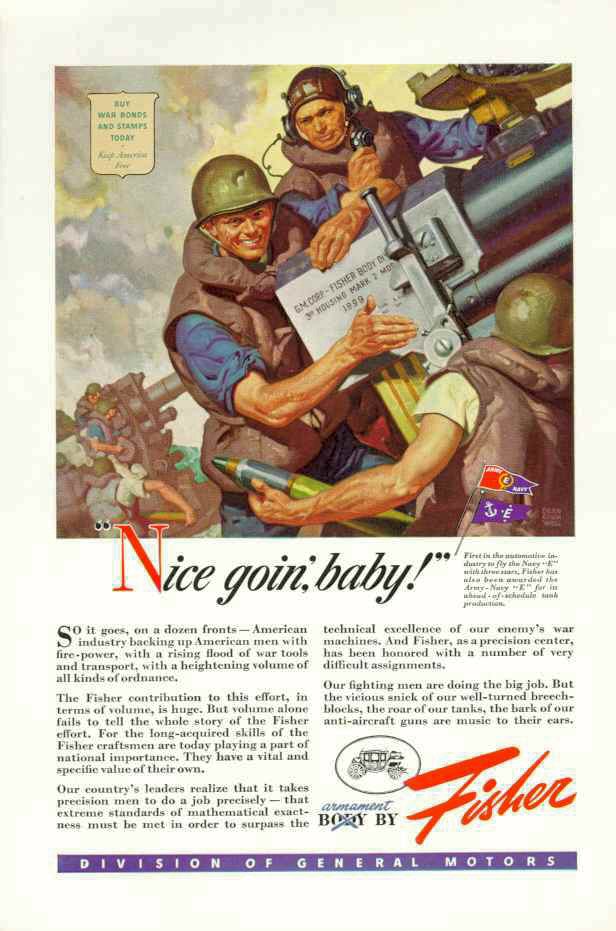 Fisher Body advertising illustration, 1940s (GM Media Archives)
Fisher Body advertising illustration, 1940s (GM Media Archives)
After the early success of the company, Fred and Charles brought their brothers William, Lawrence, Edward and Alfred into the automotive business with them. Their company headquarters, the Fisher Building built in the 1920s, is one of the most fascinating architectural buildings in Detroit. It is a 26-story art deco building designed by Albert Kahn.
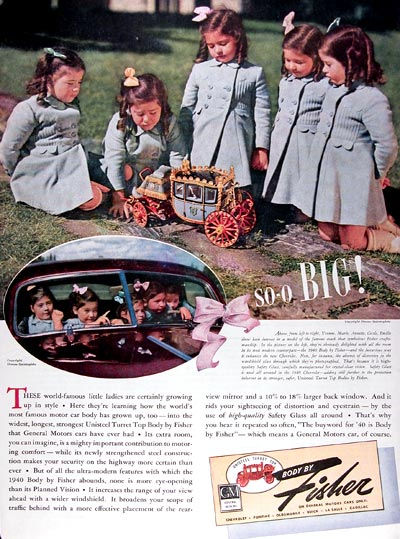 A Fisher Body ad, 1940s (GM Media Archives)
A Fisher Body ad, 1940s (GM Media Archives)
For many years, Fisher Body’s advertising campaigns featured beautiful illustrations and photography. The illustrations included the iconic Napoleonic coach that had served as the company’s logo since 1922. This symbol also became the basis for the Fisher Body Craftsman Guild from 1930 to 1968. The Fisher Body advertising art was very distinctive and highlighted the automobile in a way that reflected the auto advertising style and culture of the era.
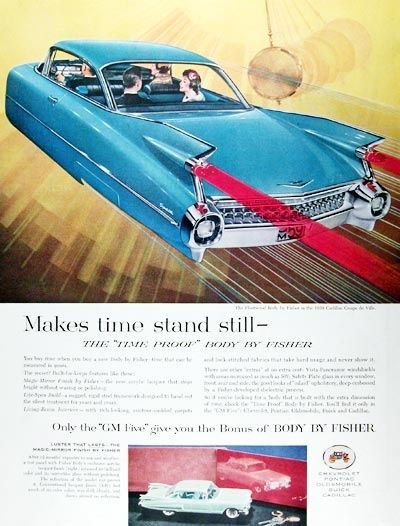 A Fisher Body ad, 1950s (GM Media Archives)
A Fisher Body ad, 1950s (GM Media Archives)
The early Fisher Body advertising was created by an American illustrator named McClelland Barclay (1891-1943), who created works for the Saturday Evening Post, Ladies Home Journal and Cosmopolitan magazines. In 1930, General Motors selected Barclay’s Fisher Body girl for a series of advertisements which soon became very popular with the American public. He used his then 19-year-old wife as the model for the iconic Fisher Body ads. He later would create iconic illustrations in support of the war efforts in the early years of World War II. Barclay also got into movie poster illustration and painted actress Betty Grable, who became one of the most famous of all the wartime pin-up girls.
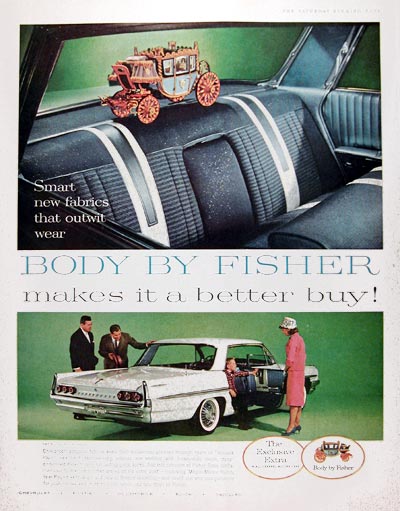 A Fisher Body ad, 1960s (GM Media Archives)
A Fisher Body ad, 1960s (GM Media Archives)
After the war ended, Fisher Body introduced more family and automotive interior illustrations along with the iconic “Body By Fisher” coach.
During the 1950s, many American designs were focused on the future and space design technology. Fisher Body advertising created flying 1959 Cadillacs, Oldsmobiles and Chevrolet models. Most designers at that time were thinking about Buck Rogers, who ventured into space aboard a rocket ship in a comic strip published from 1929 to 1967. The automakers of era offered more chrome and tail fins, calling their vehicles space age designs. Some automakers decided they wanted their cars to look like they could fly.
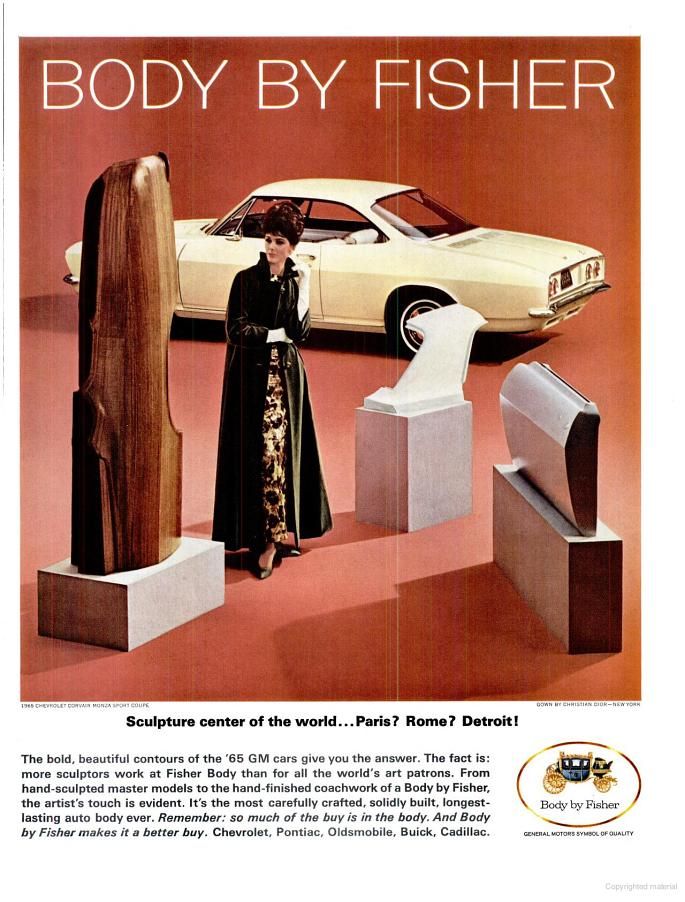 Fisher Body ad, 1960s (GM Media Archives)
Fisher Body ad, 1960s (GM Media Archives)
In the 1960s, car buyers wanted smaller vehicles, and compact cars began to be marketed more heavily to the consumer market. During the late 1960s, the “Body By Fisher” campaign featured a great advertising illustration with a great-looking Corvair with the copy: “Sculpture Center Of The World … Paris? Rome? Detroit!”
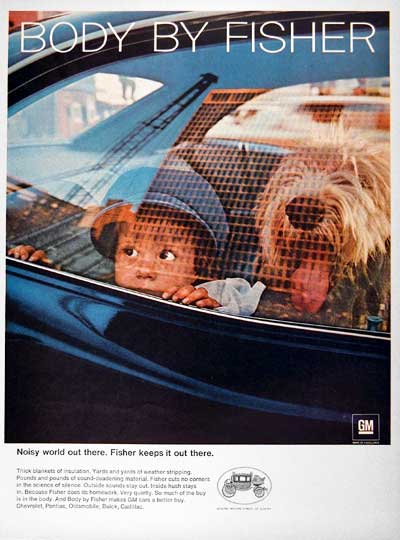 A Fisher Body ad, 1960s (GM Media Archives)
A Fisher Body ad, 1960s (GM Media Archives)
In conclusion, Fisher Body was a great part of the automaking process for years. On January 19, 1972, the last of the Fisher Brothers died. Today, Fisher Body’s legacy remains, along with their wonderful advertising and great illustrations that will be admired for years to come.
Bibliography
Detroit Historical Society. “The Fisher Family Story.” November 16, 2021.
National Museum of American Illustration. “McClelland Barclay.” 1891-1943, 2023.
Ohio History Central. “Fisher Body Company.”



